Go Take a Hike: Tips for First-Time Hikers
It Starts with the First Step.
The trail marker was sufficient warning: primitive.
Head to Southern Utah. Far from the front gate of Arches National Park, there’s a secluded trail well off the beaten path. Primitive Trail is in the center of this desert wonderland, a spur of the Devils Garden trail system. It’s seven-mile trail requires scrambling over slickrock fins, pushing through sandy creek beds, and braving the dangers of the unforgiving elements.
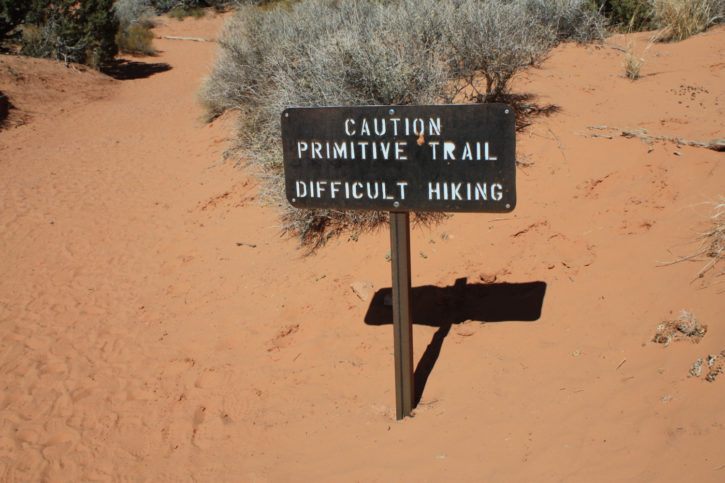
It’s barren. It’s isolated. And it’s absolutely beautiful.
The payoff for surviving Primitive Trail is remarkable. There’s seven unique arches scattered along the trail plus the Dark Angel obelisk. The path takes you to vistas with sweeping views of the entire park and offers constant reminders that Primitive Trail is the result of 300 million years of wind and water erosion.
It’s absolutely my favorite hike in my favorite park.
Learning How to Hike
I wasn’t always a hiker. In my youth, I was much more interested in team sports or playing pickup basketball. But as I got older, the aches and pains of sports became too much. I needed an exercise that challenged me that didn’t require diving for loose balls on the black top.
Geography played to my advantage. Living in Utah, there are five national parks and countless trails close to Salt Lake City. I figured since I lived so close to so many natural wonders, I should start exploring the great outdoors.
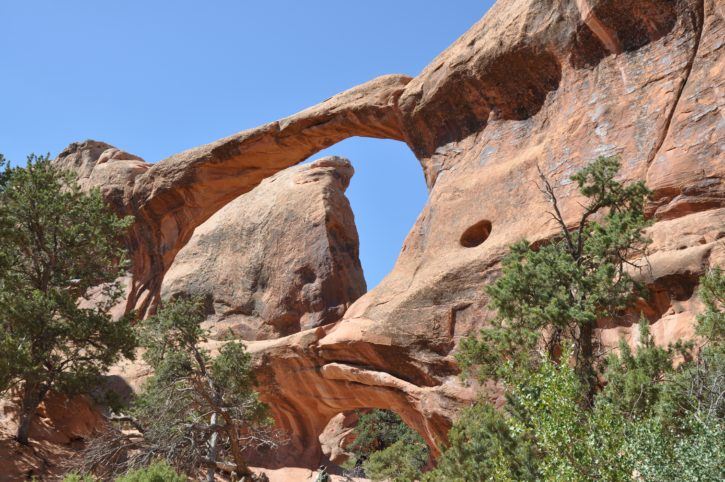
It was slow starting at first and I made a lot of mistakes in the beginning. My thinking was hiking was just walking on a dirt, but there’s actually a little more to it than that. I wore the wrong shoes. And was either packing way too much gear or not enough water. And most importantly, I learned that reading the weather report was just as important as bringing a good set of hiking poles.
Also, I had absolutely no idea what to do when I saw a four-foot Great Basin rattlesnake. (For the record, I ran like a madman in the opposite direction.)
But in time, it got easier. My hikes went from hour long to day long excursions. Like any exercise, the more you practice it, the better you perform. And the benefits of longer hikes were more than reaching new summits—I felt stronger, healthier and calmer after every trip.
Here are some tips for getting off the couch and on to the trail.
Hitting the Trail
Let’s start with your basics. You’re going to want a good pair of hiking shoes. Nothing ruins a good hike like blisters or a twisted ankle. Make sure they have a good fit—snug but not tight—and gripping tread. There should be enough padding to take the pounding from the trail but not so bulky that you lose your balance. And don’t skimp on your socks. Stay away from cotton socks and go with wool or synthetic. They’re better at wicking away sweat and keeping your feet dry.
When dressing, think in layers. A good rule of thumb is to have a base, an insulating layer, and a shell layer. The base layer is the one you wear against your skin. It’s for keeping you dry. The insulating layer is designed for keeping you warm. Wool or goose down work best at warmth-to-weight ratios. And finally, the shell is to shield you from rain, snow, and wind. Remember: it’s always easier to add additional layers than to have just one heavy jacket.
A good backpack is key for a successful hike. Just like there are countless choices for shoes, backpacks come in all shapes and sizes. Bring the one for your trip that matches your needs. If you’re going out for a quick hour-long hike, a small bag will get the job done. Longer hikes might require more gear. My experience has been to always carry enough to survive for twice the hike. If you’re going out for half a day, plan on bringing enough for a full day.
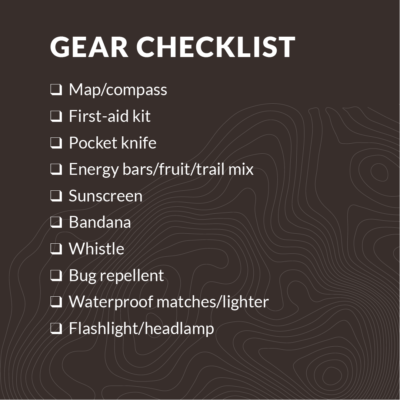
Hydration Station
Water is both your best friend and your worst enemy. It’s essential to stay hydrated on the trail—you can’t perform if you’re not getting enough water. And the symptoms of dehydration are horrible: headaches, muscle cramps, and dizziness. There’s absolutely no reason to go for a hike if you’re not packing the correct amount of water. Dehydration is serious business and will put you and your hiking companions in jeopardy if you don’t plan properly.
I make sure to start my hike with two liters of water. That’s enough for me to drink about a pint of water an hour for four hours. I feel that is a safe amount of water and I’ll plan my trip based on my consumption. Take some time to safely determine how much water you need based upon an hour of hiking.
Water does have a downside—it’s heavy. A liter of water weighs 2.2 pounds. A couple of liters of water can start to really add up when you’re huffing and puffing up a trail. As much as it stinks to admit, I’d rather have the extra weight and play it safe than pack lighter and risk not having enough to drink.
A simple life hack to get the fluids you need before heading out is to drink a liter before you start. It’s easier to carry a liter in you than in your pack. Also, make sure there’s water waiting for you back at the car or the camp site.
Leave Only Footprints, Take Only Memories
The longest stretch of Primitive Trail is from the parking lot to the entrance. This is where I like to limber up, double-check my boots, make sure I have enough water, and take inventory of my backpack. It’s my last chance to make sure I have everything I need before heading into the Utah outback.
Because hiking is physical, I know I’m going to get a great workout. If you’re a big guy like me, a 200-pound man can burn 550 calories per hour. And if you’re carrying a heavier backpack, expect to burn even more. Make sure to get a good breakfast (usually oatmeal, hard-boiled egg and a banana) and get enough water.
Even though I always hike with a partner, I make sure somebody back home knows where I’m going and when to expect me to call when I’m done. Cell phones are great for taking pictures on the trail, but don’t count on having reception when you get out there. Starting the hike is voluntary—hiking out is mandatory.
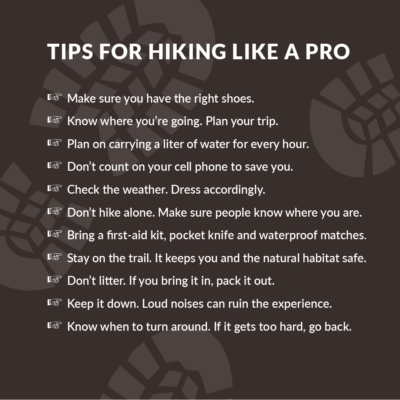
Please share your hiking tips with me in the comment section.
Let me know where you like to go and offer any tips I might have missed. I’d love to see pictures of the places you visit and the gear you trust when hitting the trail.

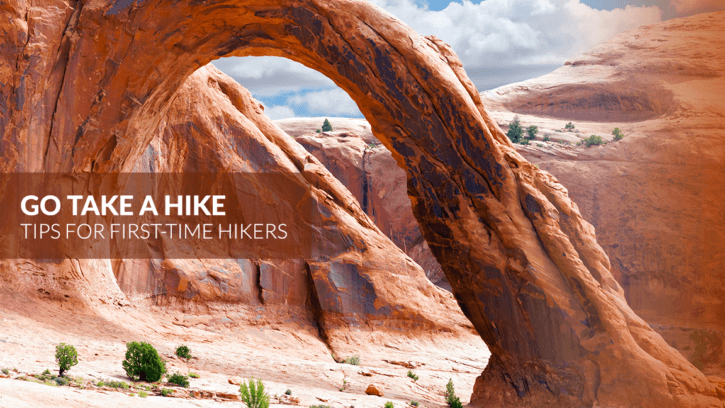
Nice post, Ben! Devil’s Garden is always a good idea.
I was going to argue with the hiking alone advice. But for newbies, yes, get your legs under you with someone else first. I hike and backpack alone all the time! It drives my friends and family nuts, but I feel very safe on well-traveled trails. I do make sure to tell people where I’m going, and I invested in a gadget that gets service anywhere and has an SOS button, so I take that on my longer or more remote adventures.
I have a few other recommendations: Get yourself a big stick or take trekking poles–it helps get up hills. Take a whistle/compass & map if you can. You may want to include water purification tablets and an emergency blanket in your first aid kit as a precaution. And take some toilet paper in a plastic baggie (gross, yes, but if nature calls, you’ll thank me, I promise)!
Buy your hiking shoes a 1/2 to full size larger than what you wear day-to-day.
And, Ben, thank you for mentioning to leave no trace. Take it with you. Don’t write on anything either–I hiked on a trail the other day where the rocks were covered in graffiti. It was so infuriating and sad.
Hiking poles are wonderful . . . even if you are young.
Ben, thank you for mentioning to leave no trace. Take it with you. Don’t write on anything either–I hiked on a trail the other day where the rocks were covered in graffiti.